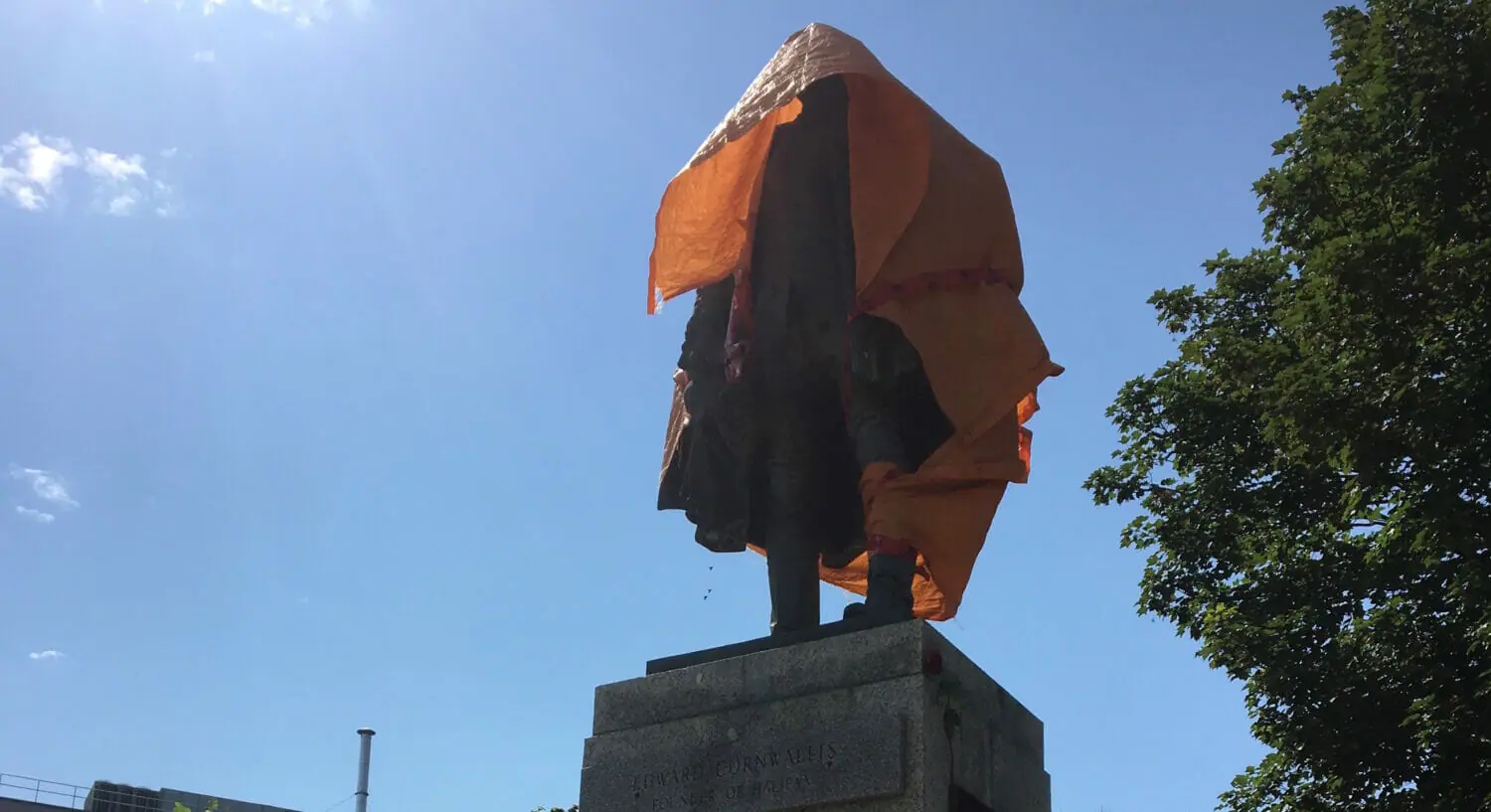It’s not surprising that there’s controversy over the Statue of Edward Cornwallis and his apparent legacy. What is surprising, is the shape this controversy has taken. The debate has become personal with the two main focuses being the scalping proclamation and Halifax’s history.
As for the scalping, the concept of total war has been around since frontier warfare, but it wasn’t formalized until the First World War. Its philosophy is that the warrior class of a society does not fight alone. If they fight, someone else is making their armour and weapons, feeding them. Any target that prevents a warrior from fighting is a legitimate target of warfare – anyone who is in an enemy camp is fair game. In history, scalping was part of warfare. The French paid for British scalps. The British paid for Mi’kmaq scalps. The Mi’kmaq killed any British person. It was brutal. It was racist.
Well, now we call it racist. The people of the time would have probably called it survival, since racism as a concept didn’t really exist until the 19th century.
Advocates for the statue keeping its place who say the statue is commemorating Cornwallis’ legacy in the proper context of history, is the most perplexing part of this debate. Frankly, it’s the most offensive. But not for the reasons above.
He joined the army and first saw action in the Fontenoy. After his commander was killed, he ran away. After the suppression of the Jacobite uprising in 1745 he burned, pillaged, raped and mass murdered his way through the civilians in the Scottish highlands. By comparison, an ineffective scalping proclamation is damn near civilized.
Cornwallis executed someone else’s plan in setting up our city. (Lord Halifax drew up the plan, which makes sense. If Halifax was Cornwallis’ brain child, wouldn’t he have named it after himself?)
But he couldn’t stop his people getting killed, so he ordered scalping, which was ineffective at both getting scalps and stopping the bloodshed. He then set up an equally ineffective peace treaty and bailed on the war he created before its conclusion.
After his brief stint in Halifax, he ran away from an English colony under attack from the French. He also bravely advocated against a raid on France to remain safely offshore. Both times there were arrests and courts martial. Both times he shirked responsibility and blamed his superior. He then lived the rest of his life in quasi-exile as the governor general of Gibraltar.
The question that remains after all the research into Cornwallis is this: Why did we chose him to put on a pedestal? Literally on a pedestal.
Being the first lieutenant-governor is worth a statue, but we’re not giving one to the Honorable Samuel Vetch. Being a lieutenant-governor alone isn’t enough to warrant a statue, we’re not going to put a statue up of our current lieutenant-governor the Honorable John James Grant. It’s a bold assertion backed up by the fact that most people reading this probably didn’t know that Grant is not our current lieutenant-governor.
Being an ineffective governor is not worth a statue. Being a coward is not worth a statue. The rape and murder of Jacobites is not worth a statue. The scalping of Mi’kmaq is not worth a statue.
If the statue is to commemorate British imperialism, Cornwallis isn’t the right person. Couple that with our independence and the collapse of the British empire, then it doesn’t make sense.
Maybe it’s not too surprising. A city that celebrates a massive explosion with a pop music festival is also a city that commemorates Cornwallis. We’ve built a statue to remember a guy who was in the right place at the right time. One of Halifax’s most notable noble nobodies. A lordly loser.
Maybe it’s time we do better.


Recent Comments